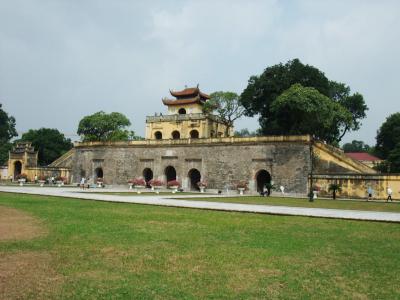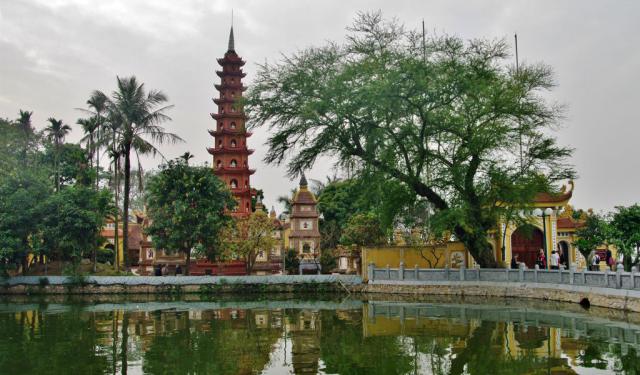Imperial Citadel of Thăng Long, Hanoi
The Imperial Citadel of Thăng Long in Hanoi is a noteworthy historical site representing various eras of Vietnamese history. Originally constructed in 1011 by Emperor Lý Thái Tổ, the founder of the Lý dynasty, this imperial complex has witnessed the evolution of Vietnam's dynastic rule through the centuries. The Citadel, initially established in the early 11th century, served as the political center of the country for almost 800 years.
Over the years, the Citadel was expanded and modified by subsequent dynasties, including the Trần, Lê, and Nguyễn. Each dynasty contributed to its grandeur, reflecting the changing architectural and cultural tastes of the periods. However, by 1810, the Nguyễn dynasty moved the capital to Huế, which marked the beginning of the decline of the Thăng Long Citadel as the center of political power.
By the late 19th century, during the French conquest of Hanoi, the Citadel had fallen into disrepair. Many of its historic structures were severely damaged or destroyed in the subsequent decades. It wasn't until the 21st century that significant archaeological efforts began to systematically excavate and preserve the ruins of this once majestic imperial city.
A significant but grim chapter in the Citadel’s history occurred in mid-1945 when it was used by the Imperial Japanese Army to detain over 4,000 French colonial soldiers during the Japanese coup d'état in French Indochina.
Recognition of the site's historical and cultural significance came on July 31, 2010, when UNESCO designated the central sector of the Imperial Citadel of Thăng Long as a World Heritage Site. This honor highlights the importance of the site not just to Vietnamese heritage but to the world, acknowledging its rich historical layers that offer insight into the cultural and political developments in Vietnam over the millennia.
Over the years, the Citadel was expanded and modified by subsequent dynasties, including the Trần, Lê, and Nguyễn. Each dynasty contributed to its grandeur, reflecting the changing architectural and cultural tastes of the periods. However, by 1810, the Nguyễn dynasty moved the capital to Huế, which marked the beginning of the decline of the Thăng Long Citadel as the center of political power.
By the late 19th century, during the French conquest of Hanoi, the Citadel had fallen into disrepair. Many of its historic structures were severely damaged or destroyed in the subsequent decades. It wasn't until the 21st century that significant archaeological efforts began to systematically excavate and preserve the ruins of this once majestic imperial city.
A significant but grim chapter in the Citadel’s history occurred in mid-1945 when it was used by the Imperial Japanese Army to detain over 4,000 French colonial soldiers during the Japanese coup d'état in French Indochina.
Recognition of the site's historical and cultural significance came on July 31, 2010, when UNESCO designated the central sector of the Imperial Citadel of Thăng Long as a World Heritage Site. This honor highlights the importance of the site not just to Vietnamese heritage but to the world, acknowledging its rich historical layers that offer insight into the cultural and political developments in Vietnam over the millennia.
Want to visit this sight? Check out these Self-Guided Walking Tours in Hanoi. Alternatively, you can download the mobile app "GPSmyCity: Walks in 1K+ Cities" from Apple App Store or Google Play Store. The app turns your mobile device to a personal tour guide and it works offline, so no data plan is needed when traveling abroad.
Imperial Citadel of Thăng Long on Map
Sight Name: Imperial Citadel of Thăng Long
Sight Location: Hanoi, Vietnam (See walking tours in Hanoi)
Sight Type: Attraction/Landmark
Guide(s) Containing This Sight:
Sight Location: Hanoi, Vietnam (See walking tours in Hanoi)
Sight Type: Attraction/Landmark
Guide(s) Containing This Sight:
Walking Tours in Hanoi, Vietnam
Create Your Own Walk in Hanoi
Creating your own self-guided walk in Hanoi is easy and fun. Choose the city attractions that you want to see and a walk route map will be created just for you. You can even set your hotel as the start point of the walk.
Hanoi Introduction Walking Tour
Known for its centuries-old architecture and rich culture with Southeast Asian, Chinese and French influences, the capital of Vietnam, Hanoi, traces its origin back to the third century BC. Originally, a portion of modern-day Hanoi served as the capital of the historic Vietnamese nation Âu Lạc. Following the collapse of Âu Lạc, the city was made part of Han China (111 BC-40 AD).
... view more
Tour Duration: 2 Hour(s)
Travel Distance: 4.0 Km or 2.5 Miles
... view more
Tour Duration: 2 Hour(s)
Travel Distance: 4.0 Km or 2.5 Miles
Hanoi's Old Quarter Walking Tour
The Old Quarter (Vietnamese: Phố cổ Hà Nội) is the name commonly given to the historical civic urban core of the city, located outside the Imperial Citadel of Thăng Long in the northern half of Hoàn Kiếm District, renowned for its small street blocks and alleys, and a traditional Vietnamese atmosphere.
During the Lê dynasty (1428-1789), the area included several lakes and wetlands... view more
Tour Duration: 2 Hour(s)
Travel Distance: 4.0 Km or 2.5 Miles
During the Lê dynasty (1428-1789), the area included several lakes and wetlands... view more
Tour Duration: 2 Hour(s)
Travel Distance: 4.0 Km or 2.5 Miles





